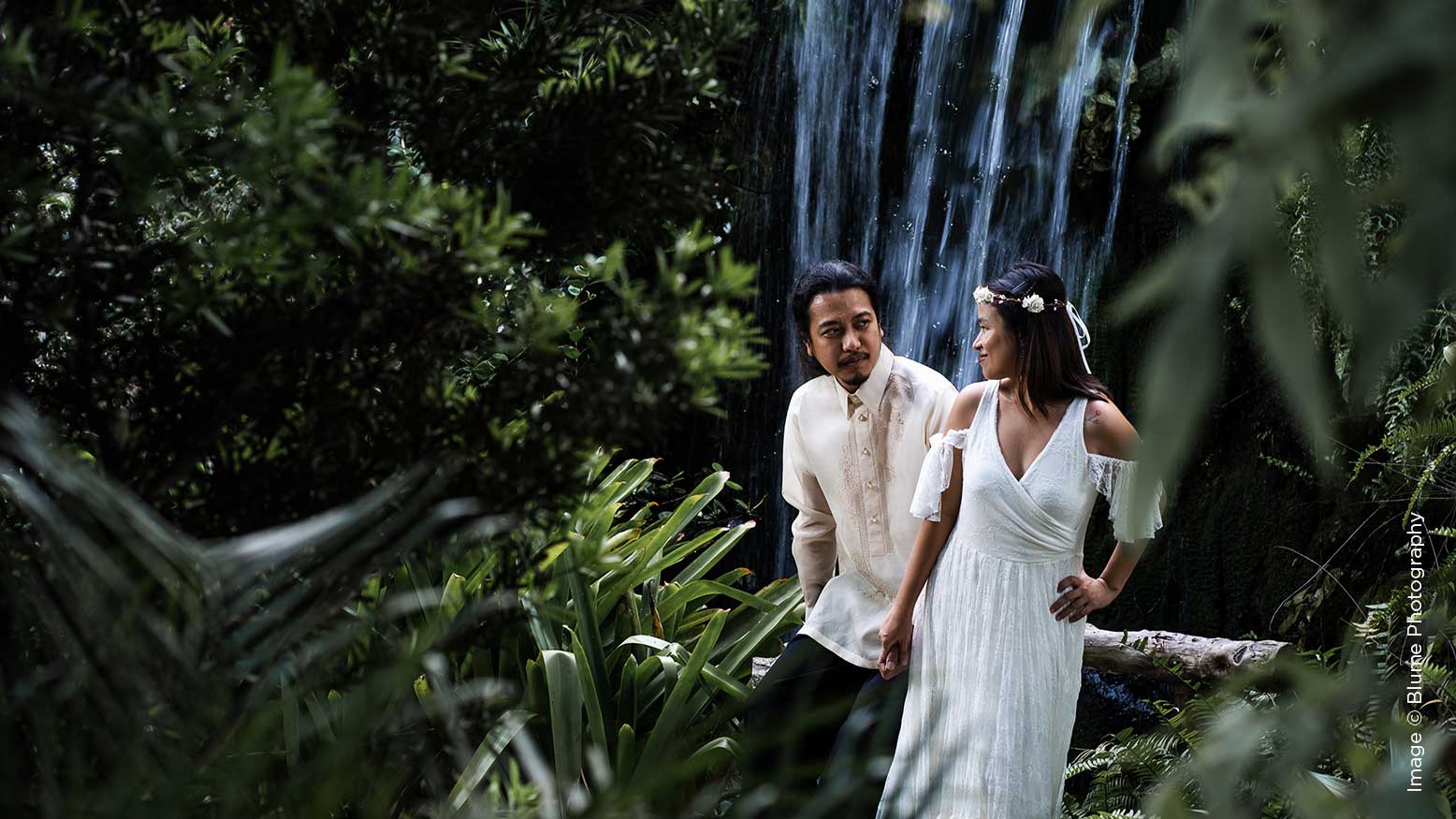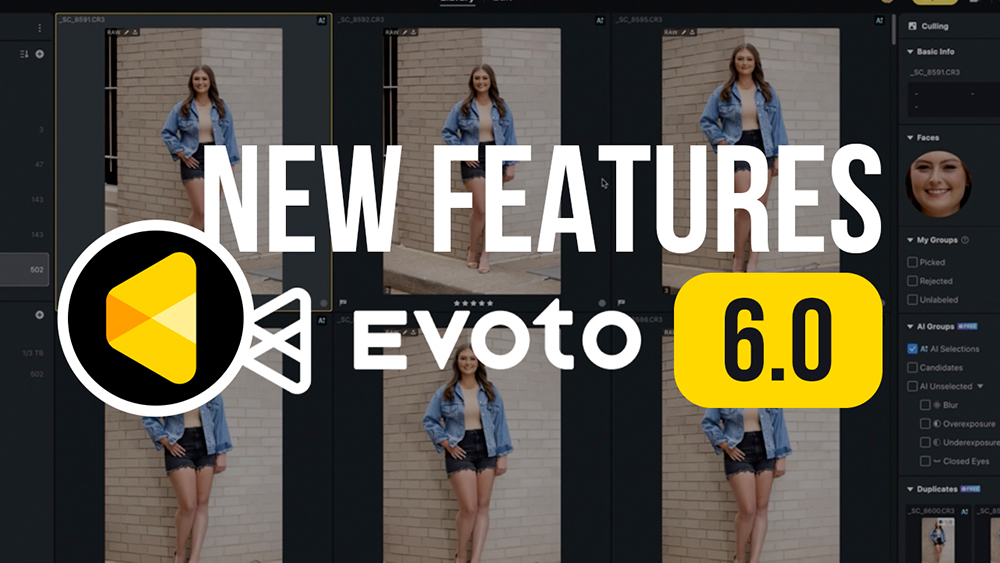How to Pack Lighter for Travel Photography with Phillip Blume
After one long travel month in 2017, my wife Eileen and I felt utterly pooped. And I don’t use the word pooped lightly, mostly because it triggers endless fits of giggling from our kids. (Oh, and did I mention our career includes traveling the world with three children under age nine?)
On that trip through Europe, our Blume trio were just three, four and six years old. Imagine the luggage. Aside from clothes, toys and emergency diapers, Eileen and I hauled three cases of photo gear for fashion and wedding shoots. Navigating airport security was a nightmare. Our kids, exhausted beyond reason, would drop boneless to the floor while our name echoed over an intercom: “Paging the Blume family. Last boarding call before departure.” Yes, we’ve missed a flight due to a bathroom emergency. Not good.
Where was the old thrill we’d experienced as destination photographers? It was buried under a mountain of luggage and stress. But our kids weren’t the problem. If you know us, you know how strongly we believe that business/family balance are achievable and stronger together. We had to find a new packing system that brought joy back into our on-the-go lifestyle.
Let’s look at our five essential categories we use to save space, the gear we bring and, finally, Peak Design’s new Travel Backpack that lets us access everything in one bag.
Category 1: Core Gear
Your camera and light options are the core of your gear. Without them, you can’t draw with light, so make sure you have exactly what you need.
You can’t sacrifice these items on the altar of minimalism, but you can make space-efficient choices. Last year we made the jump to the Sony mirrorless system. I heard the early concerns from some—that mirrorless cameras felt too small, like toys. I chuckled, imagining a 19th century photographer saying the same thing when the first handheld camera replaced the giant camera obscura. Ansel Adams would’ve been thrilled if he didn’t have to haul his camera across the Grand Canyon on a wagon.
I’m thrilled because I can fit two Sony a7iii camera bodies in the same space where I fit just one DSLR before. And they weigh just 1.4 pounds each, not 4. We’ll go into the lighter lens options in a minute.
Off-camera lighting is the same story. Just over a year ago, I carried a customized suitcase just for my strobe and its battery. Now I toss two tiny Godox AD200 flashes into my carry-on as an afterthought. They’re affordable and powerful. They can work together or be each other’s backup. You can already imagine why a shoot-through umbrella is my favorite travel modifier—it’s so compact. But here’s a secret every traveler should know: Only the Westcott 43-inch White Satin Diffusion umbrella (neither the larger nor smaller option) has a shaft that telescopes to half its length. When I cannot fit a softbox, I carry an extra large silver-side reflector cover. Drape the fabric around the open umbrella for a makeshift softbox that pushes light forward and prevents spill.
Category 2: Lenses
I love prime lenses, especially for travel. They’re sharp, fast-focusing and have fewer moving parts to break when they’re being jostled around in my backpack. I especially love the lightweight lenses of the Sony mirrorless system. That was the bright promise of mirrorless: a small camera that paired with equally small yet uncompromised glass. In practice, most lens makers found it easier to continue producing enormous, heavy lenses fitted for the new mirrorless mounts, which made the whole idea pointless.
After a lot of testing, I’ve found three very lightweight prime lenses I love: the Sony FE 28mm f/2, the Sony FE 85mm f/1.8 and the Sony Sonnar FE 55mm f/1.8 ZA. I don’t put much stock in a “luxury lens” just because of its brand name, and don’t shy away from inexpensive lenses I’ve tried and loved. These lenses perform better overall than some much more expensive lenses.
But the most important consideration in lens choice is variety: Choose both a wide-angle lens and a longer portrait lens to cover both ends of the range. A pairing of either a wide 24mm or 35mm along with a telephoto 85mm or 135mm is very popular among wedding and portrait photographers. My oddball 28mm gets me right in the middle with a great lightweight lens, and I still prefer the 85mm f/1.8 for its smaller form factor and amazing bokeh (over the trendy 135mm, which is massive and pushes me back farther from my subject).
What about your favorite 70–200mm f/2.8 that’s the size of a Scud missile? Unless you have a dedicated sherpa to tote it for you, leave it at home. Throw your 85mm on a crop-sensor camera or use a higher-pixel camera (like the Sony a7Riii) and crop in. The compromise is worth the ease of travel I gain.
Category 3: Backup Gear
Backups are even more important when you’re a thousand miles from a camera shop. I carry a small, versatile 24–70mm f/4 backup lens for worst-case scenarios. In addition to my AD200’s, I pack a couple Godox Mini TT350’s. This flash fits in the palm of your hand, syncs with the Godox/Flashpoint systems and performs in a pinch. It’s also a backup trigger for my strobes, and is almost as small as the XPro Trigger.
Category 4: Accessories
Accessories are fun and can save you a lot of room. Even if you use the super compact 5001B Nano light stand from Manfrotto, have you considered how much weight it adds? Now I make my light stands appear out of thin air. How? Easy. I pack only the head of the stand. Wherever I go, I look for a broom handle/rebar/stick and mount the head to my new makeshift “monopod.” I can even whittle down a fallen branch using my travel-safe pocket saw, giving an assistant full control over the light.
A full-size Joby GorillaPod is a brilliant replacement for your tripod. But if you just need pods to give tactical footing to your flashes, consider the much smaller GripTight GorillaPod. It’s perfect for light setups with any small flash, and its magnetic feet stick to metal.
Your best space-saving accessories are flat and cheap. Always carry your flash’s cold shoe (the little plastic foot that came with it that you almost threw away). It’s useful on the go, as are MagMod’s small lightning-fast light modifiers, in place of large Velcro grids and gels. Grab a bag of generic ball bungees from Amazon while you’re at it; use them to strap wet clothes and jackets to the outside of your backpack and to fasten strobes securely together into one unit. No expensive, bulky speed ring required.
We’ve replaced our specialized macro lens with a simple plastic extension tube adapter, and we’ve replaced our oversize camera strap system with the almost invisibly small SpiderLight holsters from SpiderHolster. So many ways to save space.
Category 5: Apparel
You want to look professional for your clients, feel comfortable traveling and have a variety of clothes to choose from. Here are some tips on packing clothes.
For any length of trip, I pack two pants (plus a third pair I wear in flight), three pairs of shorts, three t-shirts and/or button-ups, and just enough socks and underwear. The quantity allows me time to wash (or at least air out) along the way.
The real trick is to pack colors that complement each other. Think white balance. Just pack cool or warmer tones. Stick to one. Then you can mix and match pieces for variety along the way. If you’ve seen Marie Kondo’s Tidying Up, you’ve seen her now famous rolling method for clothes. Hikers have been doing this for centuries. Instead of folding wrinkles into clothes, roll them up into large freezer bags and push the air out. You save so much room and get fewer wrinkles.
On our family’s recent month-long trip to Asia, we traveled in both cold and tropical climates. The solution was not to pack winter clothes, but to layer. Buy a compressible down coat and a separate waterproof shell. They can disappear into a side pocket on your backpack when not in use.
The Travel Pack: 45L Peak Design Travel Backpack
Whether you plan to solo-trek or lead a family of five, there’s something liberating about traveling with just one bag. But is it really possible for photographers?
I think I’ve found a perfect solution with the Peak Design Travel Backpack. It’s a true photographer’s travel pack, not a camera bag, for daily workflow. It’s packed with such innovative features that it’s streamlined how we travel. Stress gone, thrill back. Let’s look at some of those features.
It expands into three sizes, which allowed me to adapt on the spot for different needs in Asia—as a substitute smaller camera bag during shoots, to maximize space as a carry-on and for heavy overland hauls. It might not be Mary Poppins’ magical carpetbag, but with its secret compartments, anti-theft features and magnetic enclosures that close themselves to hide excess straps, it feels pretty darn close.
The best feature are the killer Camera Cubes. Choose from three of these proprietary inserts for its three-layer packing system. Each uses origami-style dividers for safer, fuller packing. The large Camera Cube fills the entire Travel Backpack if you’re packing only gear. The medium Cube fills two-thirds of the pack. Smaller cubes don’t slide around since they mount securely to the bag’s interior (real clips, not Velcro). As a gear minimalist, I was thrilled to be able to fit my complete travel kit into the small Camera Cube with my AD200 at its side.
Nothing beats Peak Design’s customization for photographers. This photographer’s company makes equipment that regular travelers love too. These hand-in-glove accessories make my job 10 times easier. You have many ways to enter the Travel Backpack’s main compartment. As deceitfully simple as its surface appears, in reality it’s a mosaic of endless openings strung together by zippers—an engineering wonder that lets you access specific pieces of gear without unpacking a thing. I swing the pack onto my shoulder and open just the right-side panel to slide out my camera or flash without putting down my bag.
Check out my video to see me unpack my kit. I found it on Amazon for $299. Save $35 at B&H now for the Travel Backpack + Small Camera Cube combo (available in Sage).
Conclusion
Coming home after four weeks abroad, where all my possessions lived on my back, it’s funny how attached I became to this pack. I have only one or two minor complaints, which I go over in the video, but they’re not problems as long as you’re aware of them. I can see myself keeping this bag forever, and I can’t wait for the next trip.





